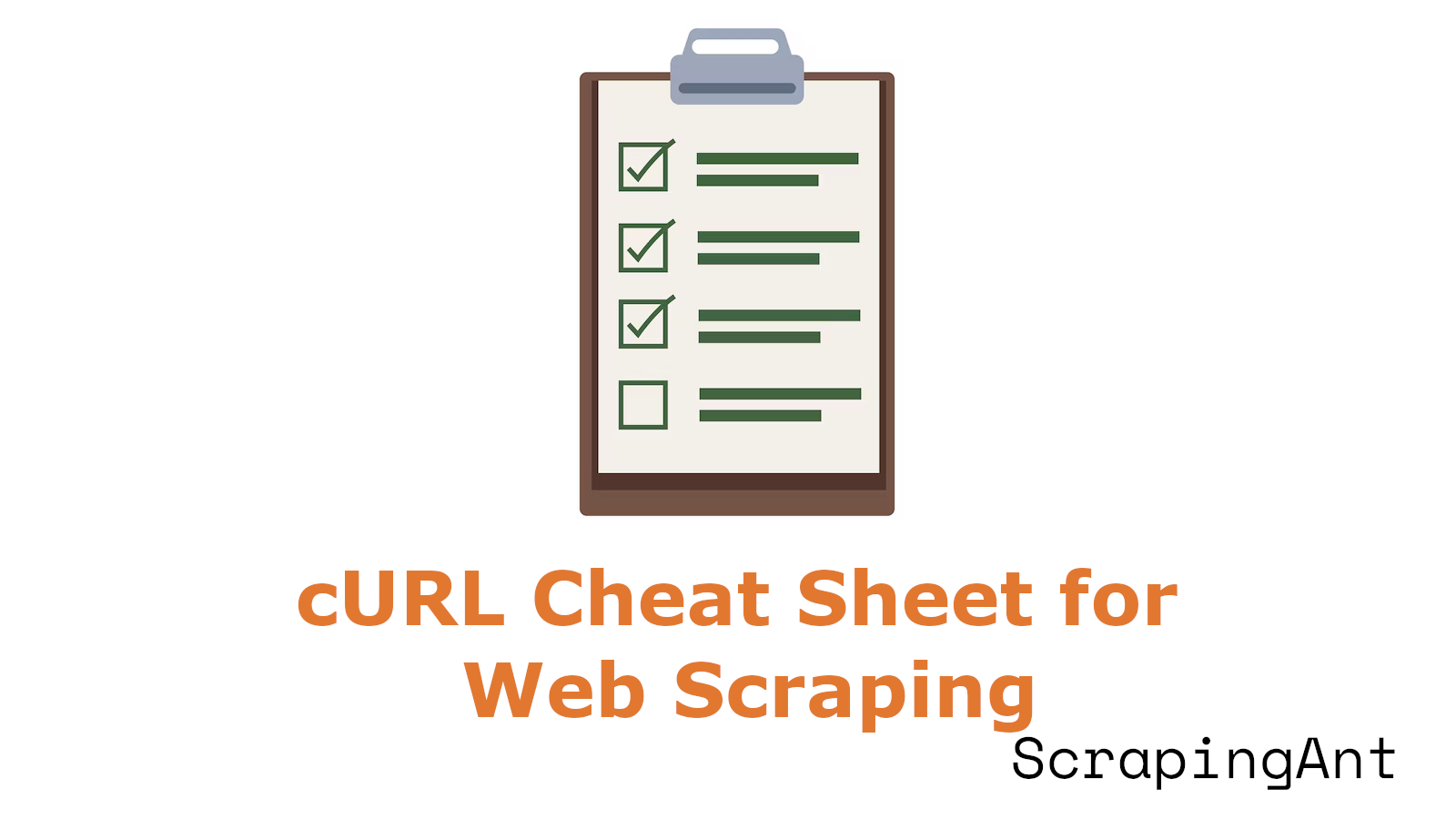
Whether you're gathering market insights, monitoring competitors, or aggregating content for analysis, efficiently interacting with web resources and APIs is crucial. One powerful and versatile tool that simplifies these interactions is cURL, a command-line utility designed for transferring data using various network protocols. Mastering cURL commands and understanding HTTP methods can significantly streamline your web scraping tasks, enabling you to automate data retrieval, manage resources effectively, and handle complex data extraction scenarios with ease.
HTTP methods such as GET, POST, PUT, DELETE, PATCH, and HEAD form the backbone of RESTful API interactions, each corresponding to specific CRUD (Create, Read, Update, Delete) operations. Knowing when and how to use these methods correctly can greatly enhance your scraping efficiency and accuracy. Additionally, cURL's flexibility allows you to handle authentication, manage request headers, and format responses effortlessly, making it an essential skill for anyone involved in data extraction and web scraping.
Fundamental HTTP Methods and Their cURL Implementations
Why Are HTTP Methods Important for Web Scraping?
When scraping data from websites or APIs, understanding HTTP methods helps you interact correctly with resources. Each method corresponds to specific CRUD (Create, Read, Update, Delete) operations, crucial for extracting, updating, or managing data.
| HTTP Method | CRUD Operation | Typical Use Case in Web Scraping | Common HTTP Response Codes |
|---|---|---|---|
| POST | Create | Submit data or create new entries | 201 Created, 400 Bad Request |
| GET | Read | Retrieve data from websites/APIs | 200 OK, 404 Not Found |
| PUT | Update | Update existing data entries | 200 OK, 204 No Content, 400 Bad Request |
| DELETE | Delete | Remove data entries | 200 OK, 204 No Content, 404 Not Found |
Using these methods appropriately ensures predictable interactions with RESTful APIs, making your scraping tasks more efficient.
Practical cURL Examples for Web Scraping and Data Extraction
Ever wondered how to quickly test API endpoints or automate data retrieval? cURL commands are your go-to tool. Let's explore practical examples relevant to web scraping scenarios.
POST Method Example (Creating Data)
Imagine you're scraping a website that requires submitting form data to access specific information:
# Create a new user record via API
curl -X POST -H "Content-Type: application/json" \
-d '{"first_name":"John","last_name":"Doe","email":"john.doe@example.com"}' \
http://localhost:3000/api/users
This command explicitly specifies the POST method, sets the content type header, and sends JSON data to the API endpoint.
GET Method Example (Extracting Data)
Need to extract user details from an API? The GET method is your best friend:
# Retrieve user data by ID
curl -X GET http://localhost:3000/api/users/123
This retrieves data for the user with ID 123. cURL defaults to GET if no method is specified.
PUT Method Example (Updating Data)
Updating scraped data entries is straightforward with PUT:
# Update user's email address
curl -X PUT -H "Content-Type: application/json" \
-d '{"email":"new.email@example.com"}' \
http://localhost:3000/api/users/123
This replaces the existing email data for user ID 123.
DELETE Method Example (Removing Data)
Removing outdated or unnecessary data entries:
# Delete user record
curl -X DELETE http://localhost:3000/api/users/123
This deletes the user with ID 123, typically returning a 204 No Content response.
Advanced HTTP Methods: PATCH and HEAD
PATCH Method (Partial Updates)
When scraping APIs, you might only need to update specific fields:
# Update only the email field of a user
curl -X PATCH -H "Content-Type: application/json" \
-d '[{"op":"replace","path":"/email","value":"updated.email@example.com"}]' \
http://localhost:3000/api/users/123
This JSON Patch format specifies the exact field to update (RESTful API Tutorial).
HEAD Method (Checking Resource Availability)
Quickly check if a resource exists without downloading the entire content:
# Retrieve only headers to check resource availability
curl -I http://example.com/api/users/123
This returns headers like content type and length, useful for verifying resources before scraping (DEV Community).
Handling HTTP Headers and Authentication
Custom HTTP Headers
Specify API versions or custom headers easily:
# Request specific API version
curl -H "API-Version: v2" http://example.com/api/users
Basic Authentication
Access protected resources with username/password:
# Basic authentication
curl -u username:password http://example.com/api/secure-data
Bearer Token Authentication
OAuth-based APIs often require bearer tokens:
# Bearer token authentication
curl -H "Authorization: Bearer eyJhbGciOiJSUzI1NiIsInR5cCI6IkpXVCJ9..." \
http://example.com/api/protected-resource
Managing Request Data Formats and Responses
Sending Form Data
Submit form data easily:
# Submit form data
curl -X POST -d "first_name=Jane&last_name=Doe" \
http://example.com/api/submit-form
Sending Data from Files
Send JSON data directly from files:
# Send JSON data from file
curl -X POST -H "Content-Type: application/json" \
-d @user.json http://example.com/api/users
Saving Response to a File
Store responses for later analysis:
# Save response to file
curl -o response.json http://example.com/api/users/123
Formatting JSON Responses
Improve readability of JSON responses:
# Format JSON response
curl http://example.com/api/users/123 | jq .
Final Thoughts on Using cURL for Web Scraping
Mastering cURL commands and HTTP methods is essential for anyone involved in web scraping and data extraction. By understanding the nuances of each HTTP method—such as GET for retrieving data, POST for creating new entries, PUT and PATCH for updating resources, and DELETE for removing data—you can interact seamlessly with APIs and websites, ensuring efficient and accurate data collection.
Moreover, advanced techniques like handling custom HTTP headers, managing authentication (Basic and Bearer Token), and formatting JSON responses further enhance your scraping capabilities, allowing you to tackle complex data extraction tasks with confidence. The practical Bash examples provided throughout this guide serve as valuable references, enabling you to quickly implement and adapt these commands to your specific scraping scenarios.
Ultimately, proficiency in cURL and HTTP methods empowers you to automate data retrieval processes, streamline workflows, and extract valuable insights from web resources efficiently. As you continue to explore and apply these techniques, you'll find yourself better equipped to handle the ever-evolving challenges of web scraping and data extraction.